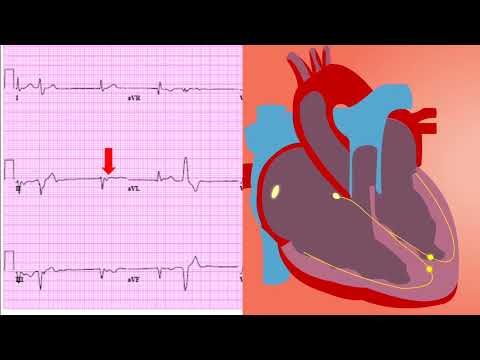🎬 Video Summary
This video provides a comprehensive overview of Adenosine, a crucial medication in emergency medicine. Learn about Adenosine’s pharmacokinetics, its uses in the ICU and by nurses, and proper administration techniques. Perfect for healthcare professionals looking to enhance their knowledge of Adenosine’s role in critical care.
🧠 Teaching Pearls
- Understand the mechanism of action of Adenosine and its impact on heart rhythm.
- Learn the specific indications for Adenosine use in emergency situations.
- Master the correct dosage and administration techniques for Adenosine.
- Recognize potential side effects and contraindications associated with Adenosine.
- Improve your confidence in using Adenosine effectively in clinical practice.
❓ Frequently Asked Questions
Q: What is Adenosine used for in emergency situations?
A: Adenosine is primarily used to treat supraventricular tachycardia (SVT) by slowing down electrical conduction in the heart and potentially converting the heart rhythm back to normal sinus rhythm.
Q: How is Adenosine administered?
A: Adenosine is administered as a rapid intravenous (IV) bolus followed by a saline flush. It’s crucial to administer it quickly due to its short half-life.
Q: What are the common side effects of Adenosine?
A: Common side effects include chest pain or pressure, shortness of breath, flushing, and brief periods of asystole (temporary pause in heart rhythm).
Q: What are the contraindications for Adenosine use?
A: Contraindications include second or third-degree AV block, sick sinus syndrome (unless a pacemaker is present), and known hypersensitivity to Adenosine.
Q: How does Adenosine work to stop SVT?
A: Adenosine acts on the AV node to slow down or temporarily block the electrical signals, disrupting the re-entrant circuit that causes SVT, thereby restoring a normal heart rhythm.
Q: What should I do if Adenosine doesn’t convert SVT?
A: If Adenosine fails to convert SVT, consider repeating the dose (as per protocol), other antiarrhythmic medications, or synchronized cardioversion.
🧠 Key Takeaways
- 💡 Adenosine is a first-line treatment for supraventricular tachycardia (SVT).
- 💡 Proper administration technique is crucial for Adenosine’s effectiveness.
- 💡 Be aware of potential side effects and contraindications before administering Adenosine.
- 💡 Understand Adenosine’s mechanism of action in slowing cardiac conduction.
- 💡 Adenosine is used in ICU and other settings by nurses and physicians.
🔍 SEO Keywords
Adenosine, SVT treatment, emergency medicine, pharmacokinetics, Adenosine administration, nurse Adenosine use, ICU Adenosine, supraventricular tachycardia.
“`

